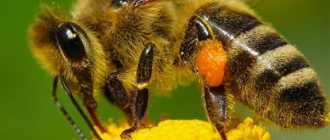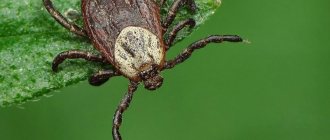In summer, dogs often become victims of stinging insects. Pets react painfully to bites. In some cases, an allergy may occur, which leads to swelling and redness of the skin, rash, and itching. The dangers are swelling of the larynx, leading to suffocation, and anaphylactic shock. These serious consequences often result in death. That's why, if your beloved dog while walking bitten by a bee, wasp, urgent action needs to be taken.
Symptoms
How to recognize that a wasp or bee has stung your dog? This can be done based on a number of signs. The animal begins to behave restlessly. Whines and makes plaintive sounds. The area where the poison enters the skin may swell.
The behavior of a pet after an attack by a stinging insect depends on the location of the bite. The most commonly affected areas are the face, paws and ears. Symptoms vary and require separate consideration.
Paws
After a painful bite, a four-legged friend behaves as follows:
- gnawing, licking the damaged area with his tongue;
- refuses to step on the sore paw, especially if the insect has stung the pad;
- whines when walking.
A pet that has been bitten by bees may develop general weakness and stress caused by a sudden fright.
Bites to the face are extremely unpleasant for animals. Especially if a wasp or bee stings the oral mucosa. Dogs often try to catch flying insects with their mouths, not realizing that they are exposing one of the most vulnerable parts of their body.
There are a large number of blood vessels on the mucosa . The sublingual area is dangerous. There is an important nerve node there. When an insect bites this area, cramps may develop - involuntary sharp muscle contractions. Usually they are local in nature (spasms cramp the forelimbs). What to do, how to help the dog? Place the animal on its right side, ensuring silence if possible. If the attack lasts more than 5 minutes, you must call an experienced veterinarian.
The greatest likelihood of negative consequences if a bee bites a dachshund, pug, or other small breed in the face . The fact is that small animals have a relatively high heart rate. The insect's venom, along with the blood, quickly spreads throughout the body, causing intoxication of the body and allergies.
If the muzzle or mouth is injured, the dog whines, howls, and rubs the bite site with its paws. She may experience increased salivation, swelling, and difficulty breathing. Often the animal refuses food.
Ears
One of the weak points is the ears. A swelling forms at the site of the bite and hardening occurs. A clear symptom for a dog that has been bitten by a bee or wasp is a loud squeal from the animal. The pet tries to relieve the pain and itching that has arisen, scratching the ear with its paw.
If such symptoms are detected, it is necessary to carefully examine the animal. Do you have significant swelling or swelling that is making it difficult to breathe? You should immediately contact your veterinarian for emergency treatment.
What to do if a cat swallows a bee?
Cats, like no other, are hunters by nature and often jump after flying insects. Sometimes it doesn't work for them.
If the outcome is good, he will simply cough it up like his own fur and go on about his business.
If there is swelling and signs of suffocation, you should give an antiallergic tablet and immediately take the animal to the veterinarian. Along the way, you should organize a drink and try to immobilize the animal and carefully monitor its condition.
What consequences might there be?
If the cat is allergic, anaphylactic shock may occur, including death. A bite can cause swelling that will block the animal's airways, leading to death from suffocation.
If you see a cat eat a bee, immediately give it as much water as possible and observe its behavior.
Relieving swelling at home
Cold should be used against swelling; apply ice bags to the swollen area. Alcohol compresses work well. You can also apply bandages soaked in a weak solution of potassium permanganate.
Regular refined sugar will help prevent the spread of poison throughout the body and absorb excess moisture.
Veterinarian help
Taking your beloved friend to the doctor is the most effective solution, which is best not to delay. After arrival, the doctor will carefully assess his patient’s condition and ask clarifying questions about allergies, age and reactions to certain medications.
After this, the bite site will be injected with adrenaline and an antihistamine, which has an analgesic and healing effect.
To normalize blood pressure, the animal will be given 15-20 drops of cordiamine. In case of a severe allergic reaction, the medication will be injected intramuscularly.
To prevent cases of bites, which are accompanied by expensive treatment, it is better to protect pets from places where bees and other stinging insects gather.
First aid
What should an owner do if his pet, for example a Chihuahua, is bitten by a bee or wasp? Show cold blood and put aside panic. First aid consists of the following:
- Emergency removal of insect stings . How to do? Extremely carefully using small scissors and tweezers. You can use, for example, a thin door lock key or a bank card. It should be remembered that when a wasp stings, the sting does not remain in the skin. The poison is released by insects directly into the soft tissue.
- Antiseptic treatment . gauze swab is applied to the bite site . It is moistened with an antiseptic, which can be chlorhexidine, ammonia, hydrogen peroxide, iodine, vodka or any alcohol solution .
- Applying a cold compress . It is advisable to apply a bag or a plastic bottle with ice to the sore spot. Cold will relieve swelling, relieve pain, and reduce the rate of absorption of poison.
What to do next to reduce the negative consequences of a bee or wasp sting on a dog? After providing first aid to an adult or puppy, it is necessary to treat any diseases that have appeared: allergies, inflammation, itchy skin. Each of the secondary ailments has its own treatment method.
In what cases should you contact a veterinarian?
In some cases, you can cope with the consequences of a bee sting on your own. But it is much safer to immediately contact a veterinarian. To make the right decision, you should analyze the existing symptoms. People contact the veterinary clinic in the following cases:
- difficulty breathing due to swelling of the larynx;
- simultaneous sting of several bees;
- the dog was bitten in the face or mouth;
- excessively weakened health of the dog.
From the outside, a photo of a dog stung by bees may seem funny. But we should not forget that the animal feels significant discomfort. It is necessary to monitor your pet’s condition even after a visit to the veterinarian.
It is important that there is always clean water in the bowl. It is advisable to remove foods that may be potential allergens from your diet.
In some cases, it may be necessary to visit the treatment room to administer injections.
Allergy
While walking, your dog was stung by a bee or wasp, developed an allergic reaction, and you don’t know what to do? It is urgent to administer an antihistamine. This may be chloropyramine or tavegil. Diphenhydramine shows good results, but pharmacies sell it with a doctor's prescription. Medicines are administered by injection. The dose is selected depending on the size of the bitten dog (its weight).
- up to 10 kg - 0.1 ml/kg;
- from 10 to 20 kg - 1 ml;
- more than 20 kg - 2 ml.
What should you do if your dog is bitten by a wasp on the cheek or lip and severe swelling develops ? A glucocorticosteroid drug, dexamethasone, . It is an immunosuppressive, anti-inflammatory drug. Used for anaphylactic shock, edema, acute manifestations of allergies. The dosage of the medicine is selected taking into account the size of the dog according to the formulas specified in the instructions.
What to do if a puppy or an adult is bitten by a bee, and the sore spot is itchy and itchy? will help : fenistil, sinaflan . Or traditional hydrocortisone ointment (1%).
You should not self-medicate if the animal has developed an acute form of allergy: the tongue has turned blue, heavy breathing has appeared. You should immediately take your pet to a specialist.
Vaccination against rabies
Thanks to its implementation, many human lives were saved
If a dog bites you, it is important to start treatment as early as possible, no later than 8 hours after receiving such an injury. If the wounds are deep or shallow, but the head, neck, toes, hands, and genitals of a person are affected, immunoglobulin injections must be given
This drug neutralizes the rabies virus. Sometimes, a day or two or even a week after its administration, allergic reactions of varying severity may appear.
Then the traumatologist prescribes a course of injections of the rabies vaccine to the victim. This is an effective drug, thanks to which the body forms immune protection against the deadly virus. Vaccination is not necessary only if the owner of the dog presents a certificate confirming that it is vaccinated against rabies.
Rabies vaccination
The number of injections is determined depending on the information about the dog that bit the patient. If it is an unknown stray animal, 6 injections are prescribed. The first is done immediately on the day the victim applies. He receives the rest upon arriving at the trauma center on the 3rd, 7th, 14th day, then after 1 and 3 months.
Vaccination is carried out according to a different scheme, when the dog that bit the person is known, not vaccinated, but apparently healthy. She is isolated and the animal is monitored. If within 10 days he does not show signs of rabies, the victim is given only 3 injections: on the day of treatment, on the 3rd and 7th days. During the vaccination course and six months later, you should not drink alcoholic beverages, overwork, sunbathe or visit the bathhouse, or allow the body to become hypothermic.
Such reactions, although rare, do occur. Can be:
- redness, swelling, itching at the injection site;
- headache;
- rise in temperature;
- slight enlargement of lymph nodes;
- malaise.
Pregnancy and childhood are not grounds for refusing vaccinations. They are mandatory even several months after a dog bite. Vaccination is provided free of charge.
Author of the article: Bespalova Irina Leonidovna
Pulmonologist, Therapist, Cardiologist, Functional Diagnostics Doctor. Doctor of the highest category. Work experience: 9 years. Graduated from Khabarovsk State Medical Institute, clinical residency in therapy. I am engaged in the diagnosis, treatment and prevention of diseases of internal organs, and also conduct medical examinations. I treat diseases of the respiratory system, gastrointestinal tract, and cardiovascular system. Bespalova Irina Leonidovna published articles: 503
Treatment and relief of edema
Was your dog bitten by a wasp? There is a high probability of developing inflammation and swelling. Swelling may appear immediately after the poison enters the body, or over the next 2-3 hours. To eliminate the condition, medications and folk remedies are used.
Pills
Animals with edema that have been bitten by insects are prescribed the following medications:
| Name | Release form | Dosage |
| Prednisolone (steroid hormone) | 5 mg tablets | 0.5-1 mg per 1 kg of weight (every 12 hours) |
| Fenkarol | tablets 10 mg, 25 mg | 10-15mg /2 times a day |
| Clemastine | 1 mg tablets | 0.05-0.1 mg/kg (every 12 hours) |
| Medrol(methylpred) | 5 mg tablets | 0.4-0.8 mg/kg |
| Zodak (cetirizine) | 10 mg tablets | 1 mg/kg (interval – 24 hours) |
Medicines are convenient to use. Before use, they must be crushed and turned into powder . Dosage for treatment should be discussed with your veterinarian during an in-person visit or by telephone.
If a dog that has been bitten by stinging insects develops swelling, doctors recommend using diuretics. For example, Lasix, torsemide, veroshpiron, hypothiazide. In this case, it is necessary to provide the animal with plenty of fluids .
Ointments
What else needs to be done for swelling if the dog has been bitten by bees or wasps? Use anti-inflammatory, analgesic ointment Indovazin . It should be used together with the drug Famotidine , a gastrointestinal protector.
Dexamethasone ointment, which has antiallergic and decongestant properties, effectively helps against bites. It will relieve a dog that was bitten by insects while walking from pain, swelling, itching, and hives.
Glucocorticoid ointments show high effectiveness in treatment: elocom, advantate . They are also available in the form of cream and suspension. They are hormonal drugs. Relieves inflammation, swelling, reduces tissue susceptibility to allergens.
Typically, ointments are applied 2 times a day (morning and evening) until the swelling subsides. Any medications can cause allergies. If it occurs, you should stop using the drug and consult a veterinarian.
Traditional methods
What to do if an insect bites a dog, but there is no way to use pharmacological agents? Minor swelling, inflammation, and itching can be completely dealt with using traditional methods, using the healing properties of plants.
- Aloe vera . The juice of this succulent has been used for centuries to treat skin diseases. It relieves swelling and inflammation. Relieves rashes and severe itching. If a puppy or adult dog is bitten by a wasp while walking, you can apply the pulp of the plant to the sore spot.
- Echinacea . Dogs that have been bitten by bees or wasps in the summer are given a lotion with a decoction of this plant. Echinacea is a natural antiseptic and antiviral agent. Effectively helps with symptoms of snake bites.
- Pharmaceutical camomile . The plant heals wounds, reduces inflammation and swelling in pets. Medicinal decoctions are prepared from chamomile, which are used for compresses on the bite site.
- Plantain . It is a kind of ambulance. Owners remember it as soon as the question arises: what to do if a dog was bitten by a wasp or a bee while walking. A leaf of the plant can be applied to the wound, kneading it in your hands to release the juice.
- Bulb onions . You can apply half of the whole head to the affected area, cut side down. Another way is to chop the onion using a knife or blender. Apply the resulting pulp to the bite site through gauze so as not to cause a skin burn.
Herbal lotions are good for wasp bites. They may include, in addition to the above plants, calendula, comfrey leaves and roots, mint, lemon balm, parsley, dandelion. You can enhance the effect with honey. It will help draw out the poison that remains after removing the insect sting from the wound.
“Green healers” are used to prepare healing infusions for allergies. 1 tbsp. l. dry raw materials are poured with a glass of water, put on fire and boil for 3-5 minutes. The resulting product is given to the animal 30-50 ml with each meal. For these purposes, nettles, wild rosemary, yarrow, oak bark, blueberries, and cinquefoil are used.
The owner should be aware that herbal infusions and teas may taste bitter. Getting your pet to drink them for treatment is quite difficult. What to do? Sweeten the resulting infusion with dextrose or glucose to make it pleasant to drink. For internal use, you can use dry herb. It is recommended to finely chop it and mix it with meat or minced meat.
Traditional methods of treatment must be coordinated with a veterinarian. Many plants, if used incorrectly, can cause harm to animals. Only a doctor knows what to do and how to use them correctly if a four-legged friend is bitten by a bee.
What to do if you are bitten by an unfamiliar street dog?
If an adult or child has been attacked by a pack of yard dogs, then assistance must be provided in the first minutes after the attack, even before the ambulance arrives. Street animals, especially those living in a pack, can be very aggressive, as their natural instincts are more developed. Injuries in such cases are numerous and serious. The victim usually needs to be examined by a doctor, and sometimes surgery is required.
First aid
First aid for a dog bite is to wash the wounds.
It is important that the infection does not enter the general bloodstream, so damaged tissues are washed with running water and soap and treated well with any antimicrobial agent
If there is bleeding, you should not immediately bandage the wound; you need to let the blood come out with particles of the animal’s saliva - this way you can reduce the risk of infection. However, large blood loss should not be allowed. In case of severe bleeding, a tourniquet should be used. In other cases, a cotton bandage or bandage is applied.
Visiting the clinic
A victim of street animal bites must be examined by an emergency physician. If the injuries are minor, then treatment and application of sterile dressings are carried out. For serious injuries, the patient is taken to the hospital, where the surgeon cleans the wounds, sutures large vessels and applies stitches if the area of skin tears is too large.
If indicated, specialists take the victim’s blood for analysis to identify the presence of infectious agents. For injuries of bones and joints, an ultrasound scan is prescribed.
After an attack by domestic animals, a person should go to the clinic to avoid the development of complications and prevent infection with rabies or tetanus. The doctor will prescribe the necessary medications to treat wounds at home.
Further treatment of the victim
The need for hospitalization for animal attacks occurs rarely. As a rule, people who have been attacked by a pack of dogs, as well as children who have suffered serious damage to skin and muscle tissue, need hospital treatment.
In other cases, the patient can be treated at home. Doctors prescribe a course of antibiotic therapy to prevent the development of infections. It is recommended to use antiseptic solutions and ointments to treat wounds. Pain-relieving medications may also be required. If the wound does not heal for a long time, you should return to the clinic.
What to do with the dog?
An attack by a street dog should be reported to the veterinary service. Specialists will need information about the location of the animal and its external features. The victim and witnesses must describe how the attack took place, what the dog looked like, and where he went after the incident. After capture, the animal is monitored to ensure that it does not show symptoms of rabies.
Prevention
We looked at the symptoms, treatment and prevention if your dog is stung by a wasp or bee. Is there any way to protect your pets from stinging insects? This cannot be done completely. But you can minimize the risks.
You should keep an eye on your pet while walking. Keep it away from flowering plants and berry bushes. This is especially true for active breeds. After all, you can often meet, for example, a curious dachshund that was stung by a bee while out for a walk. But a calmly walking French bulldog rarely becomes a victim of stinging insects.
The walking area should be checked for wasp nests. By following these rules, the number of bites will be kept to a minimum. The dog owner must have a first aid kit containing the medications necessary to provide medical care.











